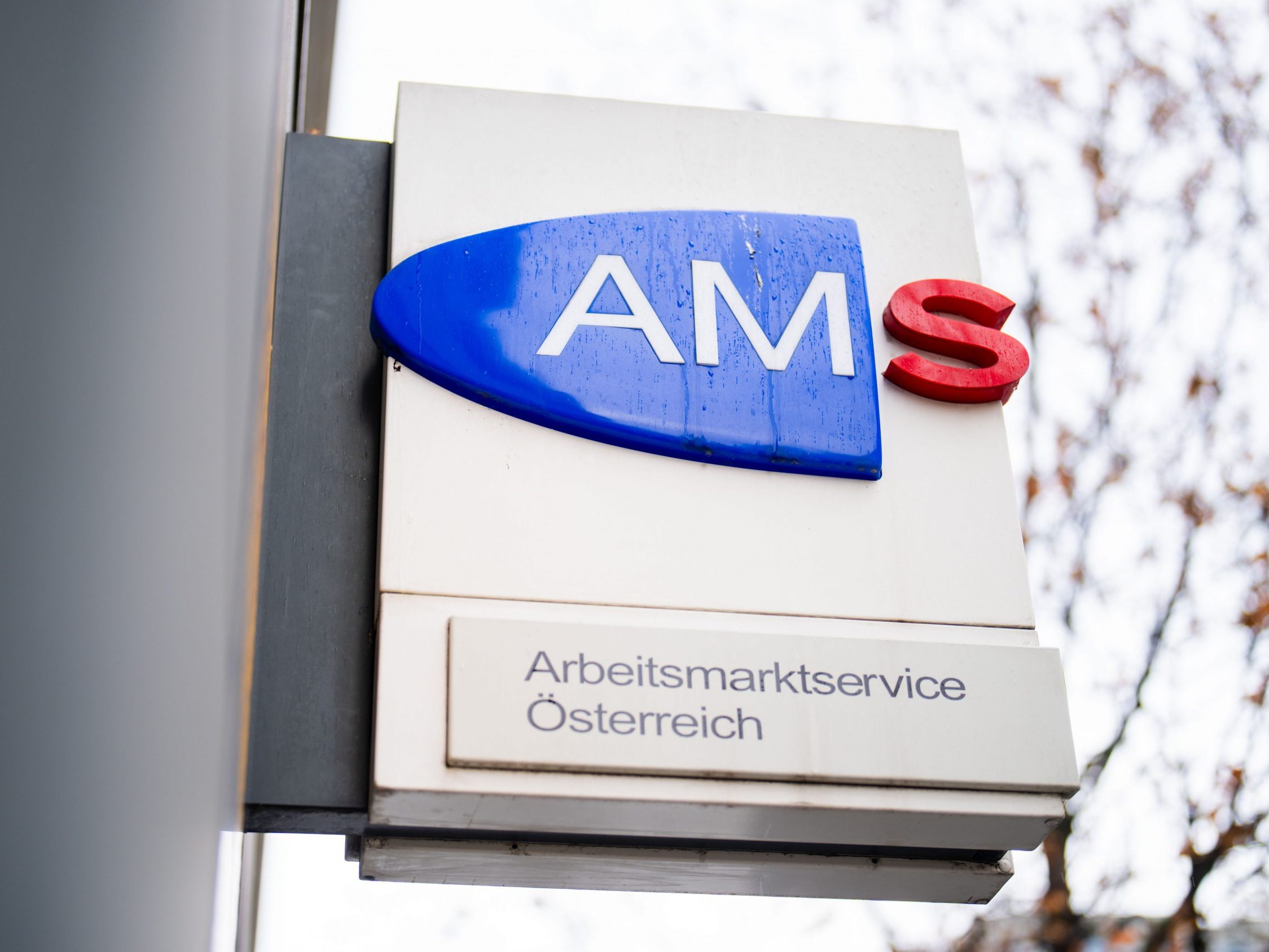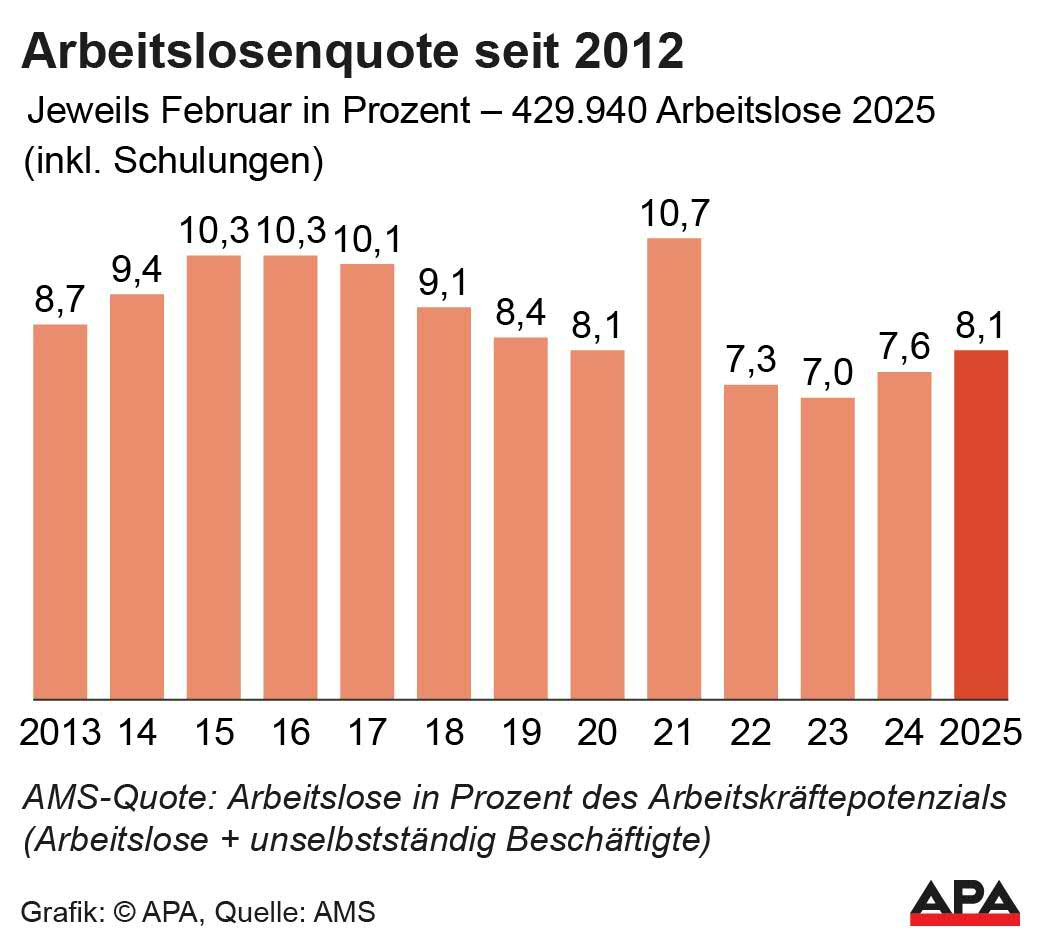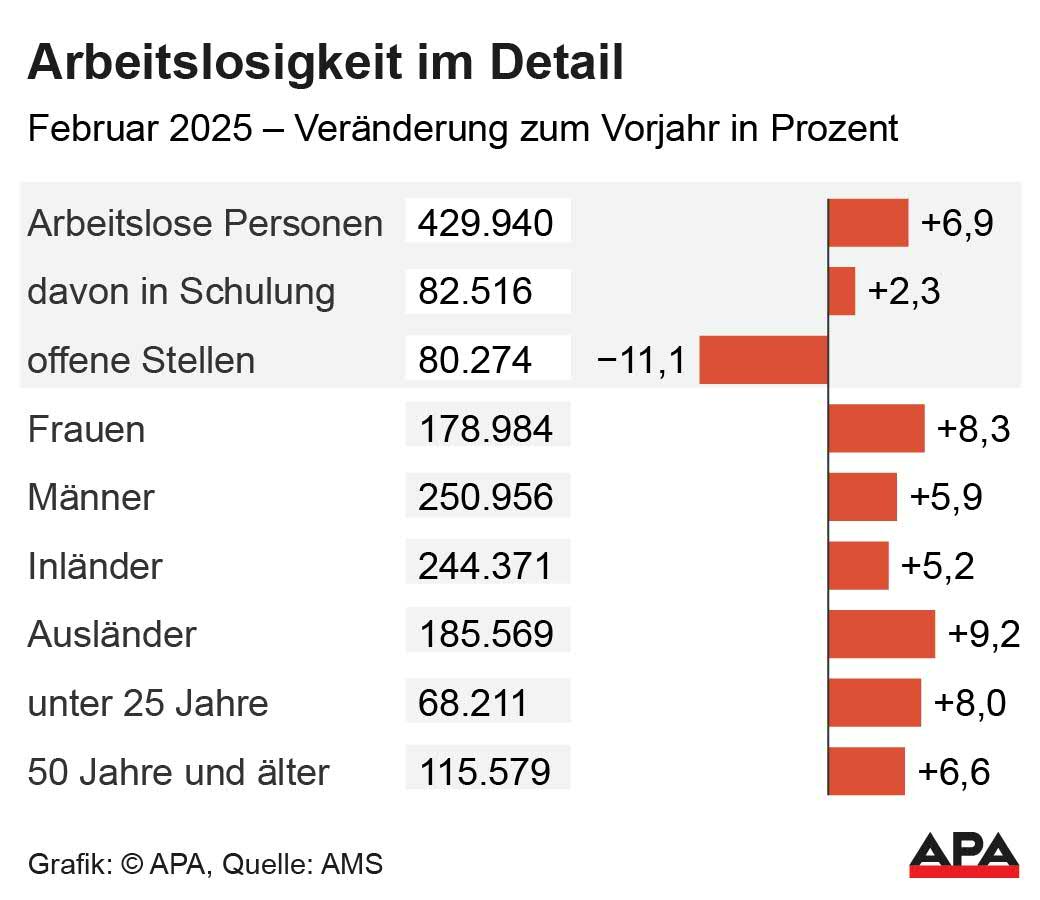Unemployment Increased in February

The weak business development in industry and trade continues to drive up unemployment figures. At the end of February, 429,940 people were registered as unemployed or in training with the Public Employment Service (AMS), of which 347,424 were unemployed and 82,516 were in AMS training programs. Compared to the same month last year, the number of unemployed and training participants increased by 6.9 percent or 27,643 people.
Higher Unemployment Rate
The unemployment rate increased by 0.5 percentage points to 8.1 percent. "It is not an easy start for a new federal government," commented AMS board member Johannes Kopf on the current unemployment figures in a statement. Austria has been in a recession for about 2.5 years, and this is "also clearly shown by the labor market." Kopf positively assesses the government program of the new turquoise-red-pink coalition. "The new federal government has announced that it will equip the AMS with significantly more budget to combat unemployment. This is an important first step," said the AMS chief.

The largest percentage increase in unemployed people and those in AMS training at the end of February compared to the same month last year was in manufacturing/industry (+14.9 percent) and in health and social services (+12.2 percent). The increase was somewhat lower in trade (+8.3 percent), in gastronomy and accommodation (+5.7 percent), and in transport and warehousing (+5.2 percent). There was a slight increase in unemployment in construction (+2.5 percent) and in temporary employment (+0.1 percent).

Thousands of Apprentices in Training
According to the Ministry of Labor, 97,424 apprentices are currently being trained in Austrian companies, 28,796 of them in their first year of apprenticeship. Currently, there are more people looking for apprenticeships than there are available positions: 7,891 young people are registered with the AMS as looking for apprenticeships, and the number of open apprenticeship positions is 7,616.

Decrease in GDP
The domestic economic performance also declined in the fourth quarter of 2024. According to calculations by Statistics Austria, the gross domestic product (GDP) fell by 0.4 percent in real terms compared to the previous quarter, and the year-on-year decrease was 0.5 percent. This presents a gloomy picture, as the Economic Research Institute (Wifo) had still assumed a decline of 0.2 percent year-on-year in its quick estimate at the end of January.
The location Austria is currently experiencing "the longest phase of weakness since the beginning of the corresponding calculations in 1995," explained Statistics Austria Director General Tobias Thomas according to a press release on Monday. Overall, the domestic economic output decreased by 1.1 percent in 2024 compared to the previous year, according to preliminary calculations. "Austria is still in recession, which has now lasted for two years. By the end of 2024, economic output has declined again, although not as sharply as before," said the head of statistics.
The Wifo, in its quick estimate for the fourth quarter at the end of January, still assumed a GDP decline of 0.2 percent year-on-year and stagnation compared to the previous quarter. For the entire year 2024, the GDP would have shrunk by one percent "based on seasonally and working day adjusted values."
The domestic economy has been struggling with a slump since 2023, but according to Statistics Austria, the decline continuously weakened over the past year 2024. In the first quarter of 2024, the decrease was still about 1.9 percent, in the second quarter it was -1.4 percent, and in the third quarter -0.8 percent.
Goods Production and Construction Most Affected
The negative development in the fourth quarter affected almost all economic sectors, with goods production (-5.6 percent), construction (-2.5 percent), and gastronomy and accommodation (-2.6 percent) being the most affected. However, there were positive growth rates in the areas of public administration, health, and education (+3.5 percent). Looking at the entire year, a similar picture emerges, with only trade showing positive impulses again in the fourth quarter (+0.4 percent).
The economic development in the 4th quarter of 2024 was also clouded by the lower investment volume (-2.1 percent) and the decline in exports (-5.0 percent). The declining investments were still mainly due to the decreased construction investments (-3.1 percent). Meanwhile, there was a recovery in consumption, which increased by 1.5 percent compared to the previous year's quarter (private consumption +0.8 percent, public consumption +3.1 percent). Over the entire year, private consumption remained unchanged, while public consumption increased by 1.6 percent.
A nominal increase of 8.5 percent was recorded in employee compensation for the entire year 2024. The number of employees changed only slightly (+0.1 percent), while the number of self-employed decreased slightly (-0.2 percent). The hours worked increased by 2.6 percent in the fourth quarter, resulting in a decrease of 1.0 percent over the entire year.
(APA/Red)
This article has been automatically translated, read the original article here.





